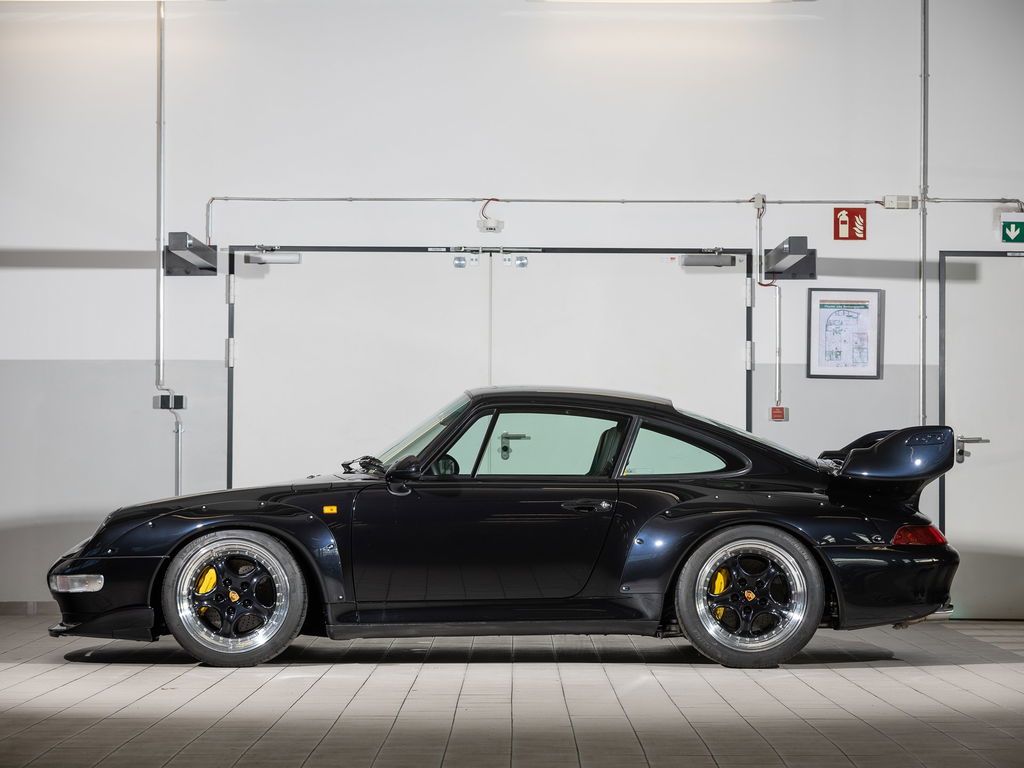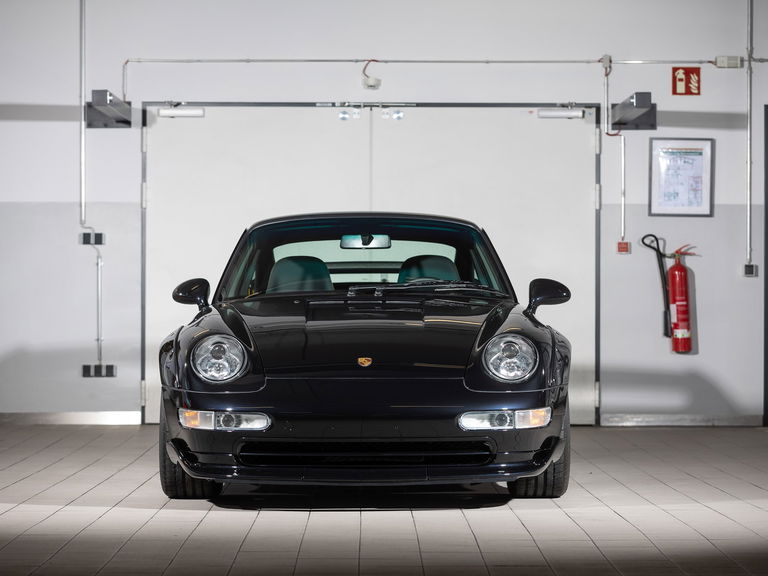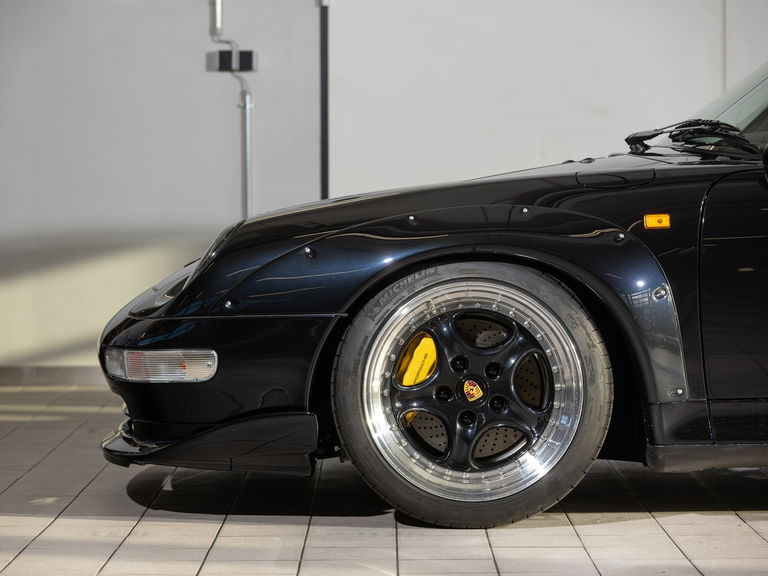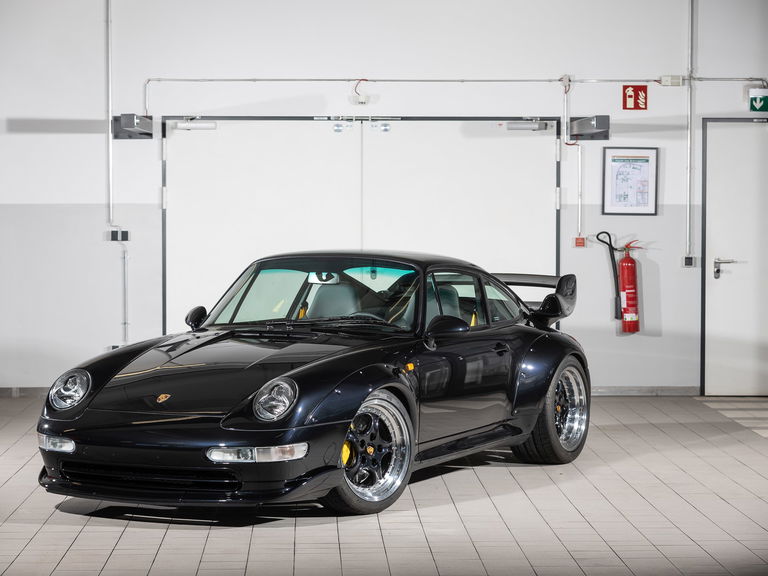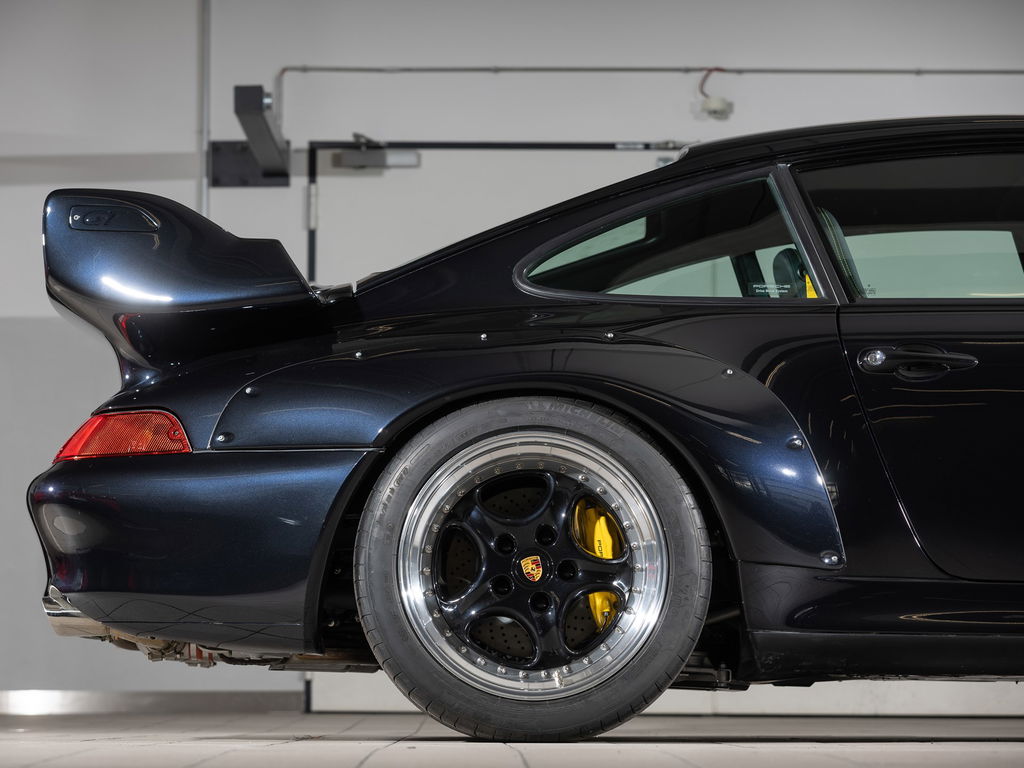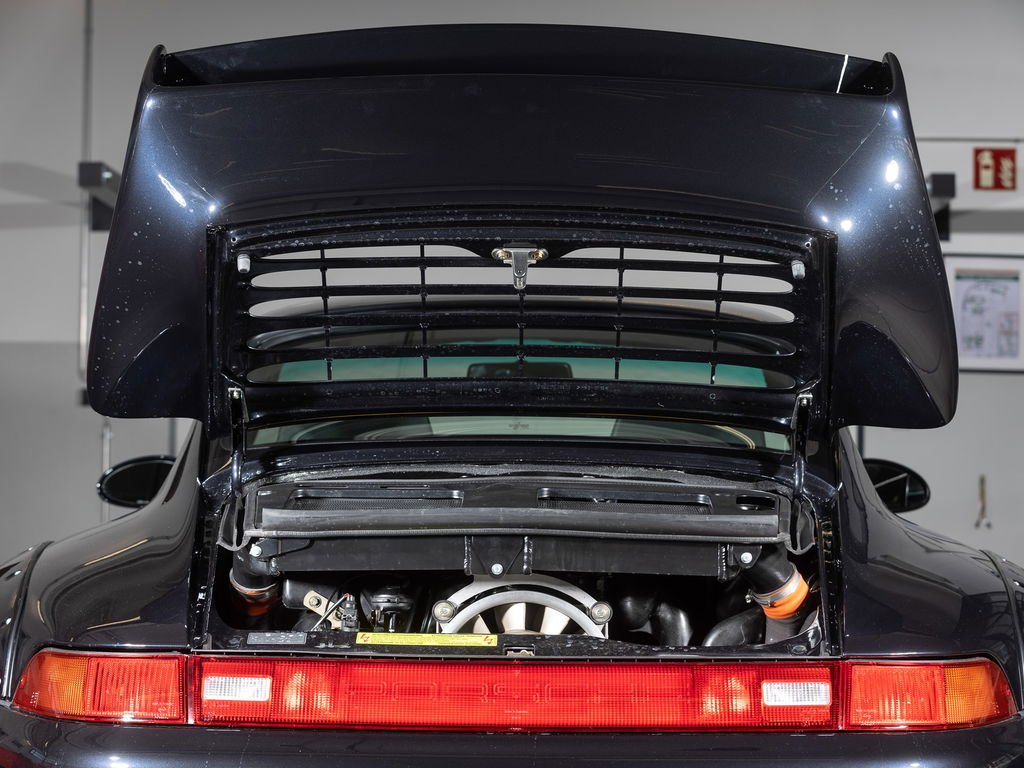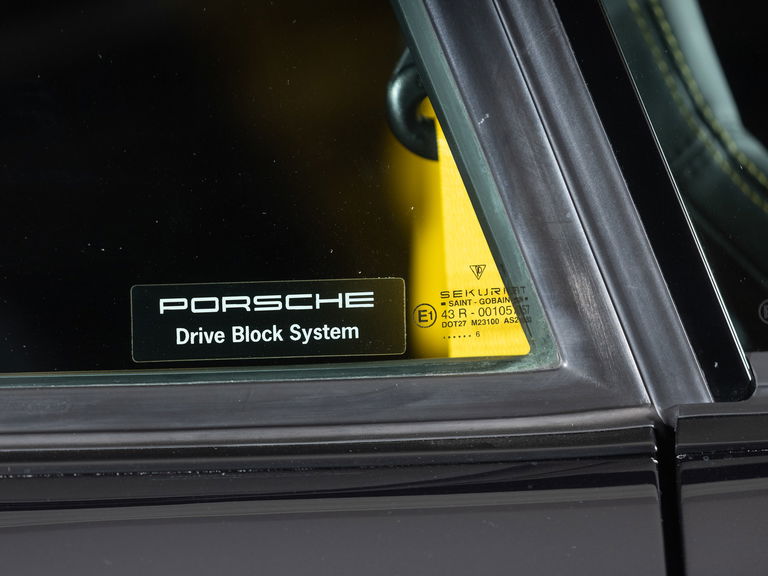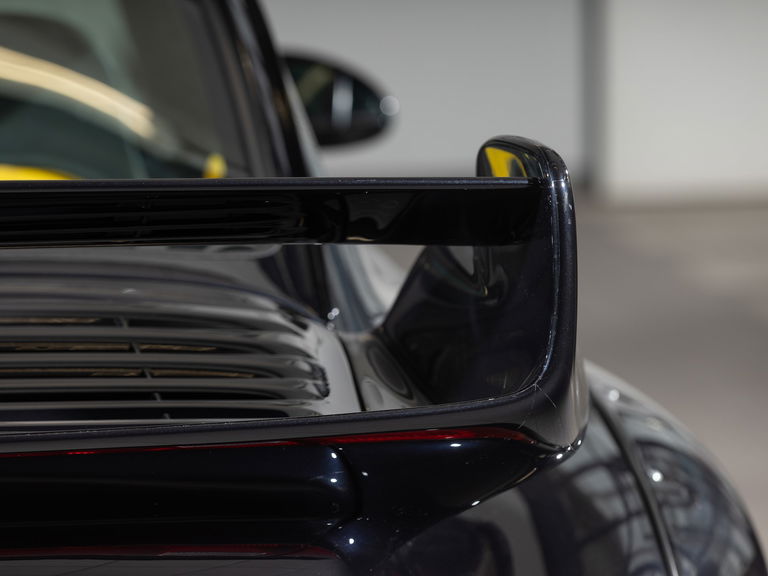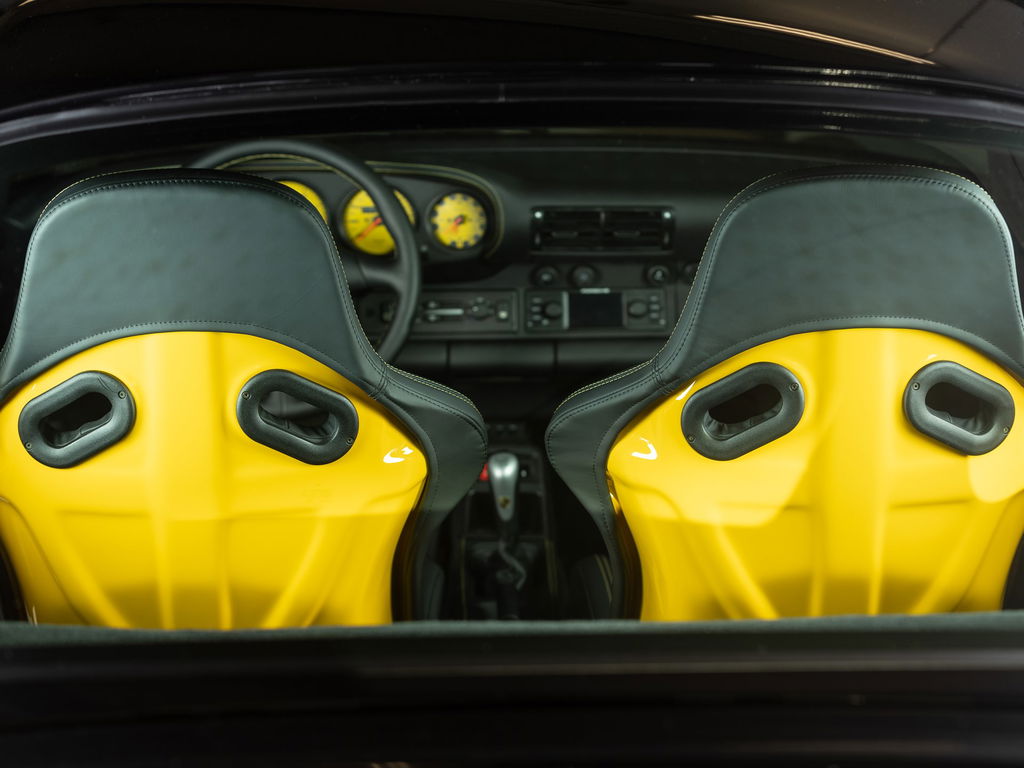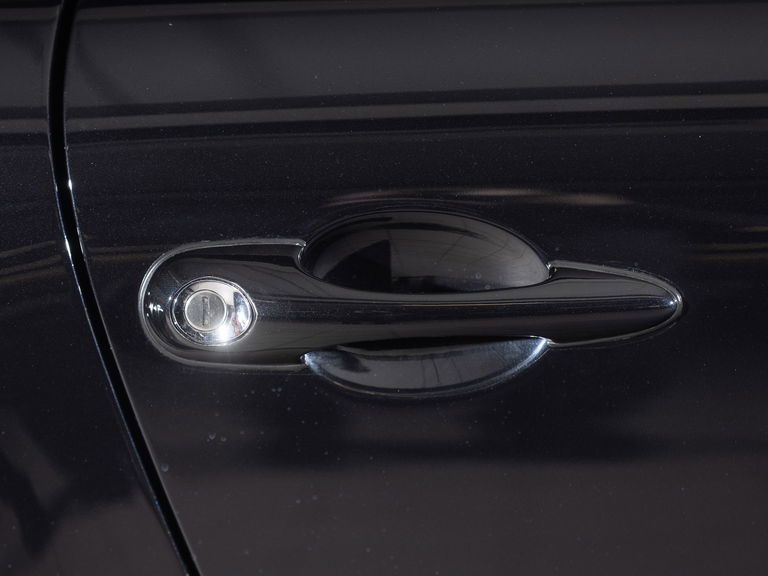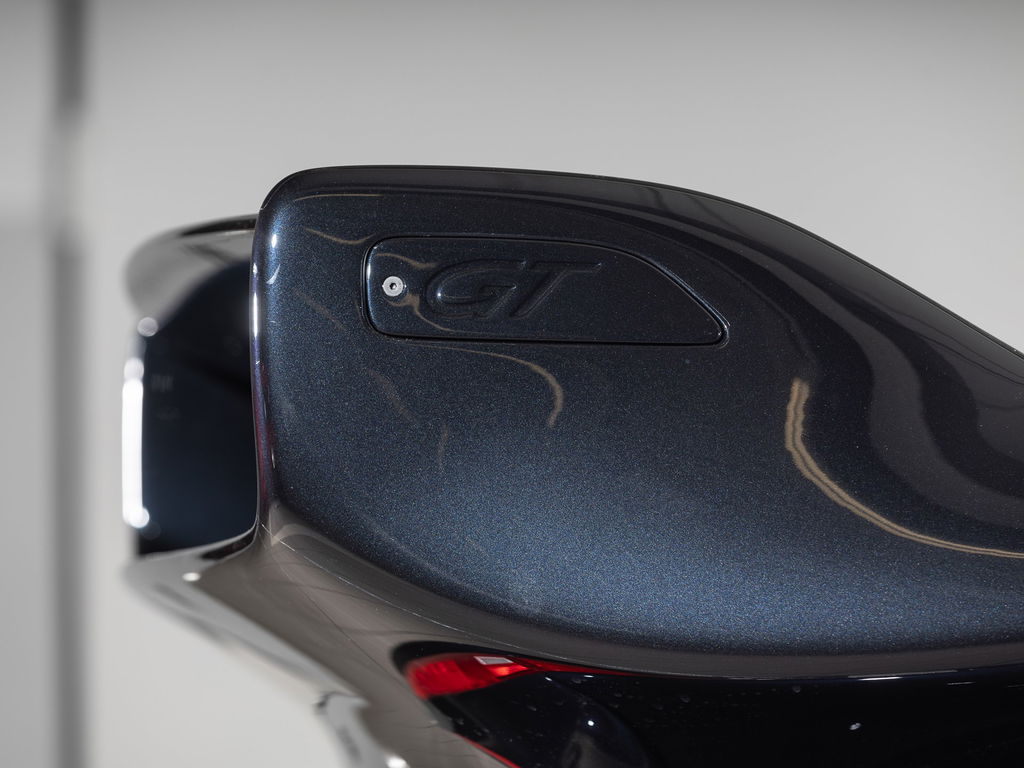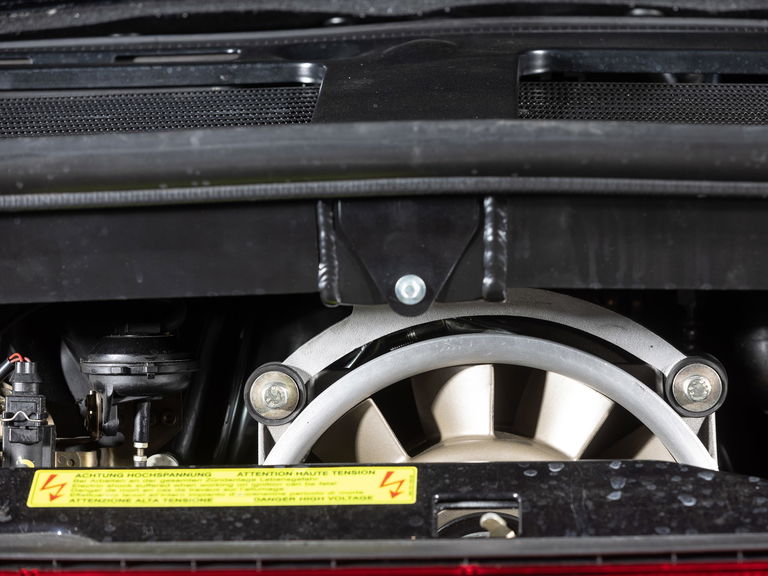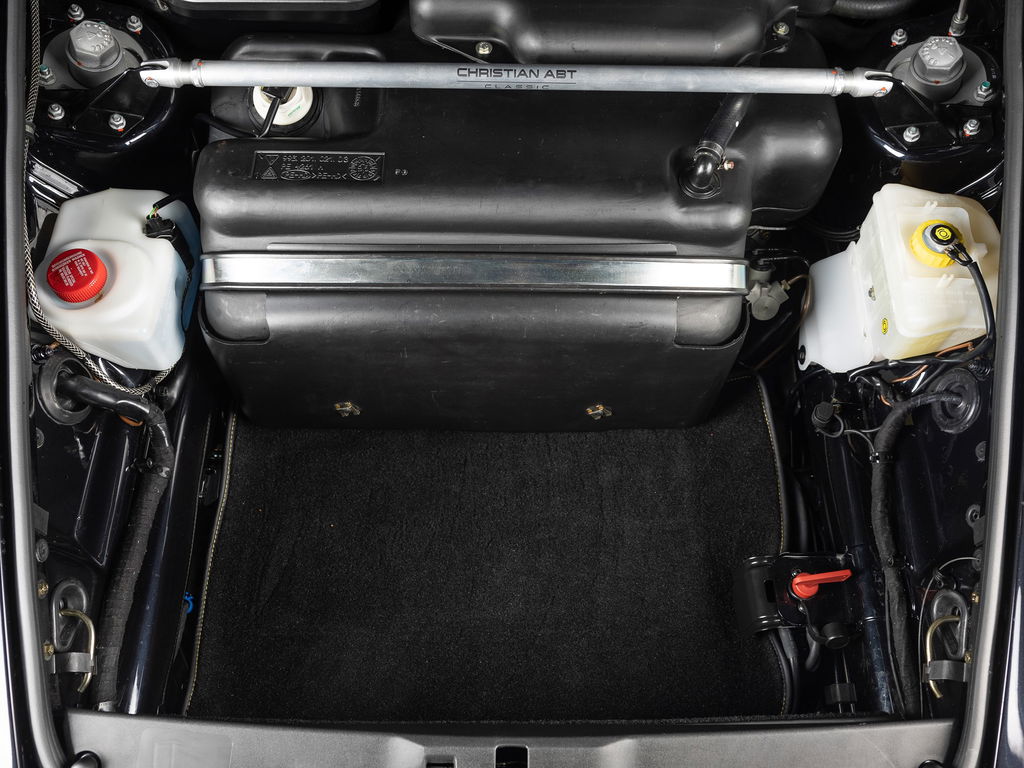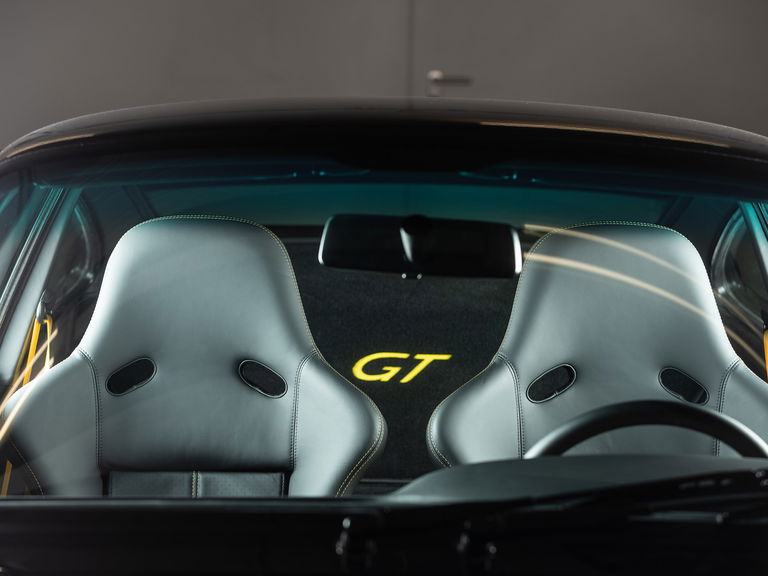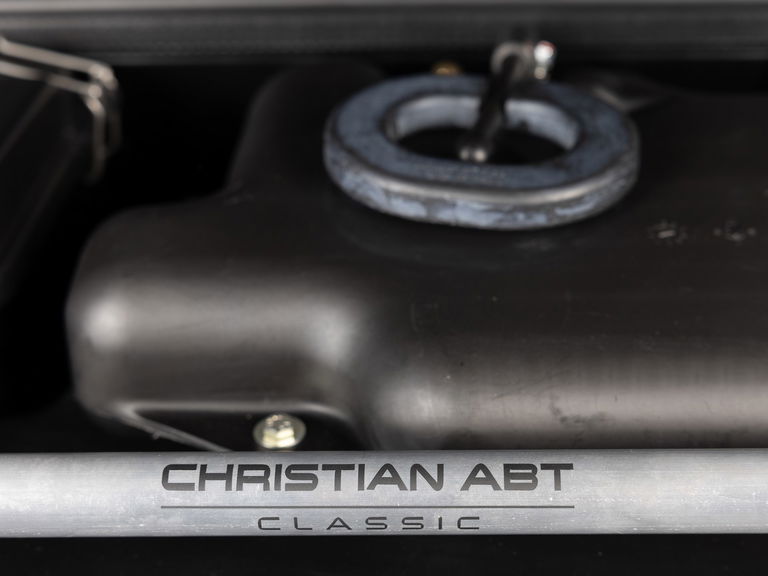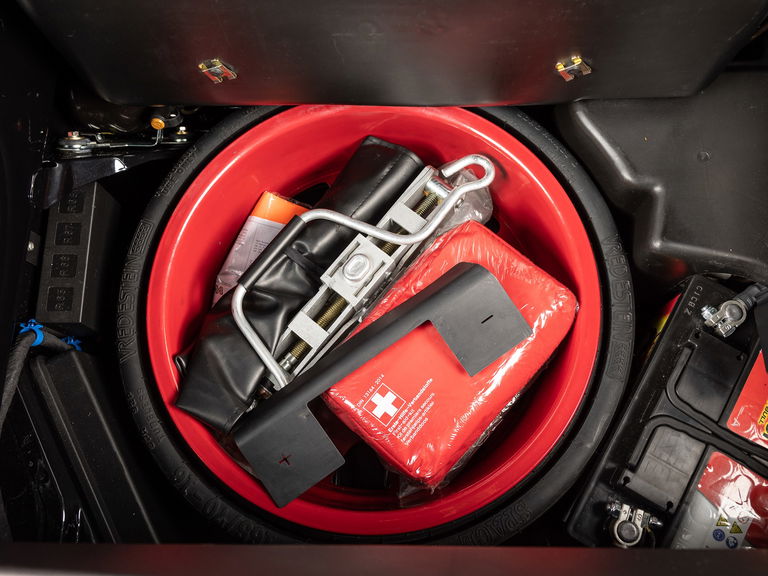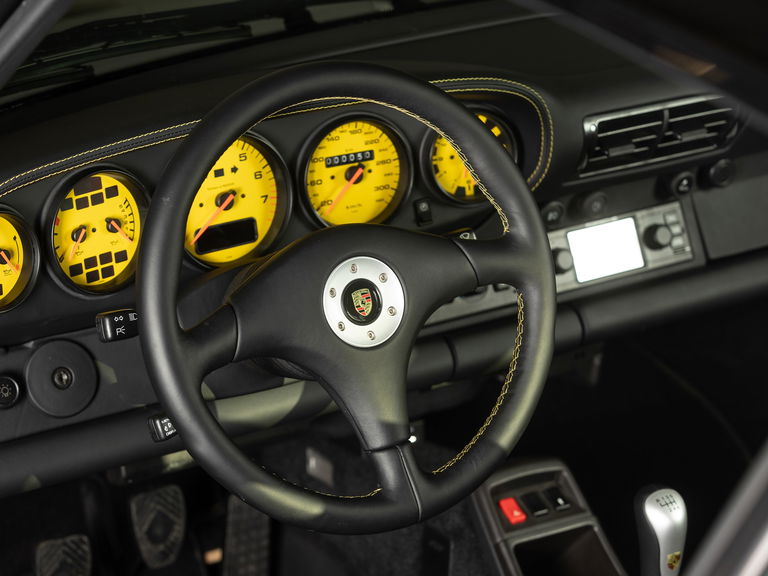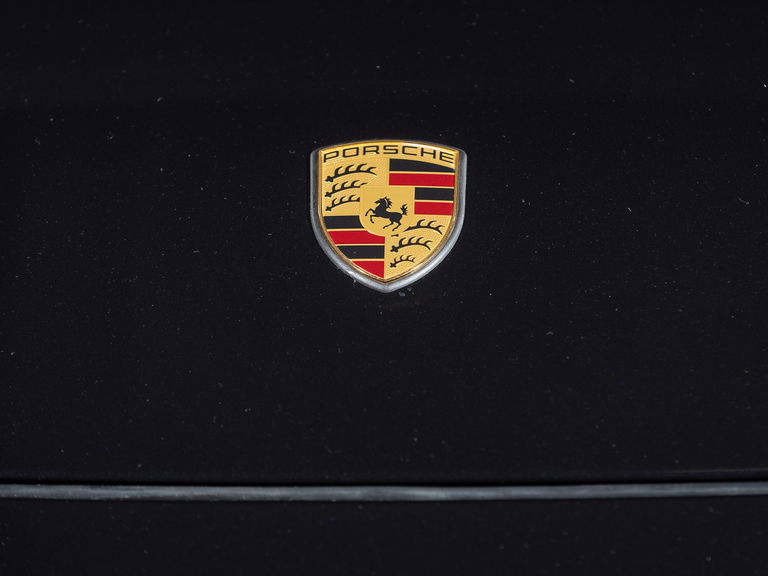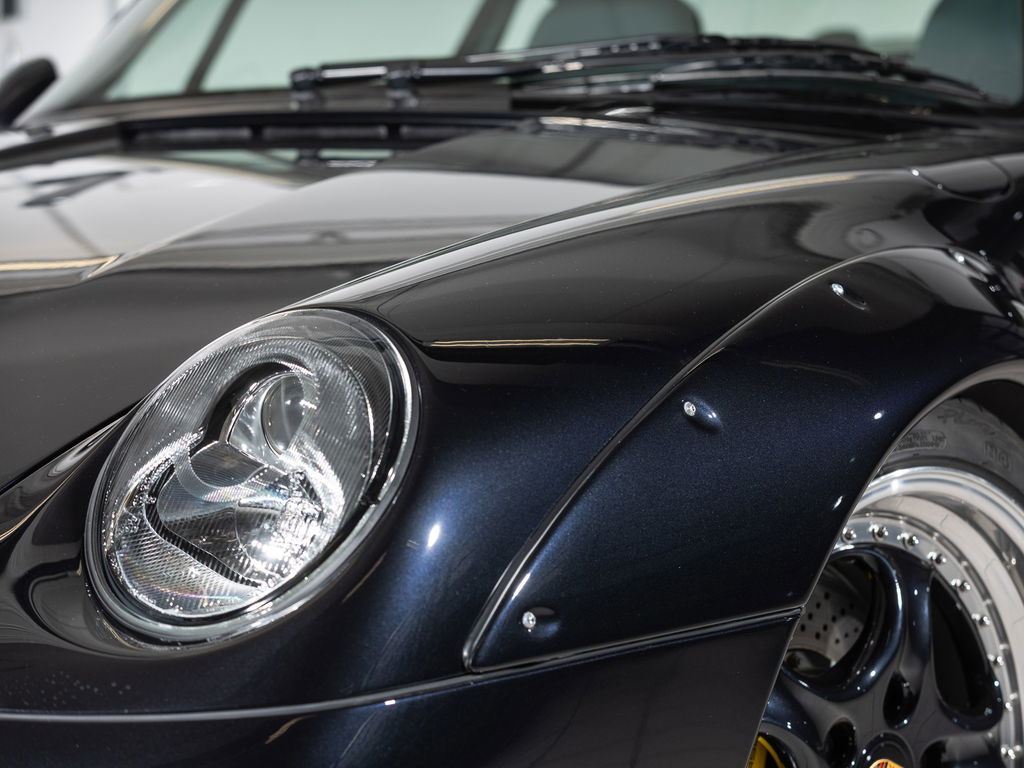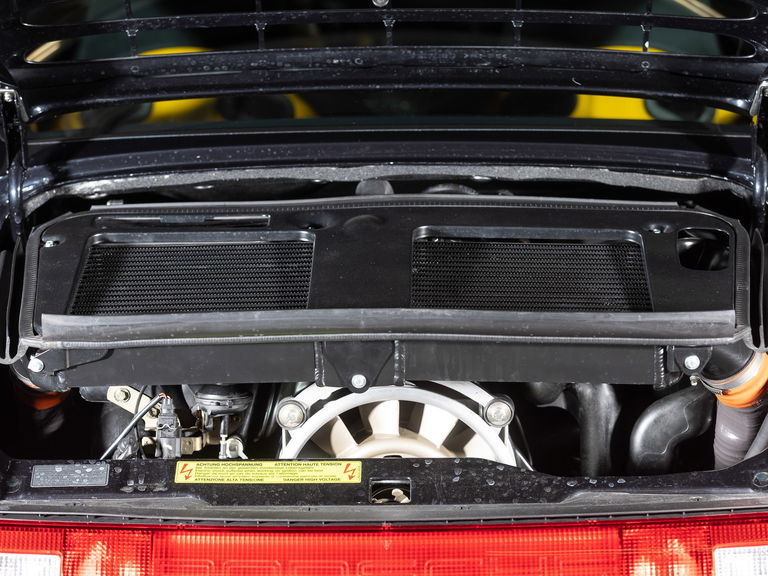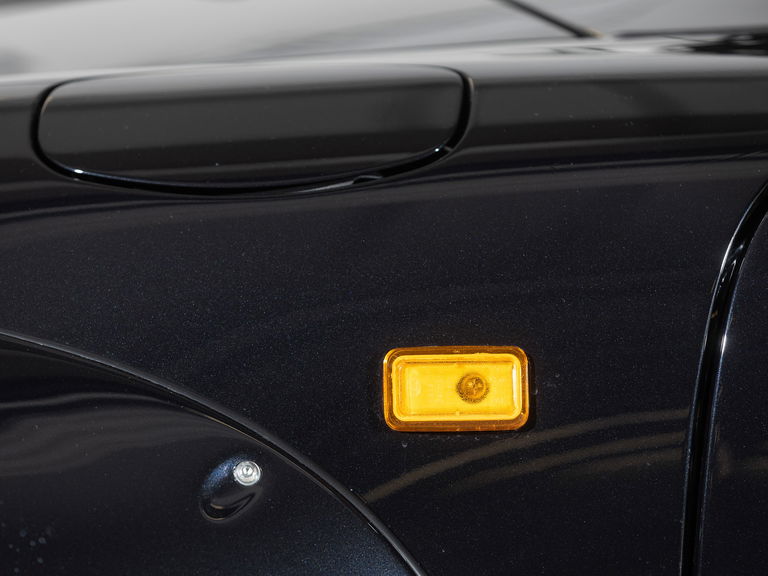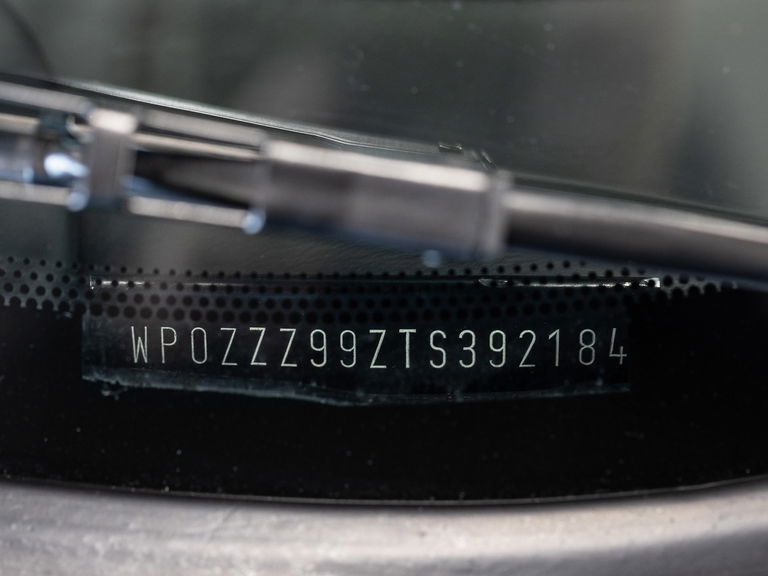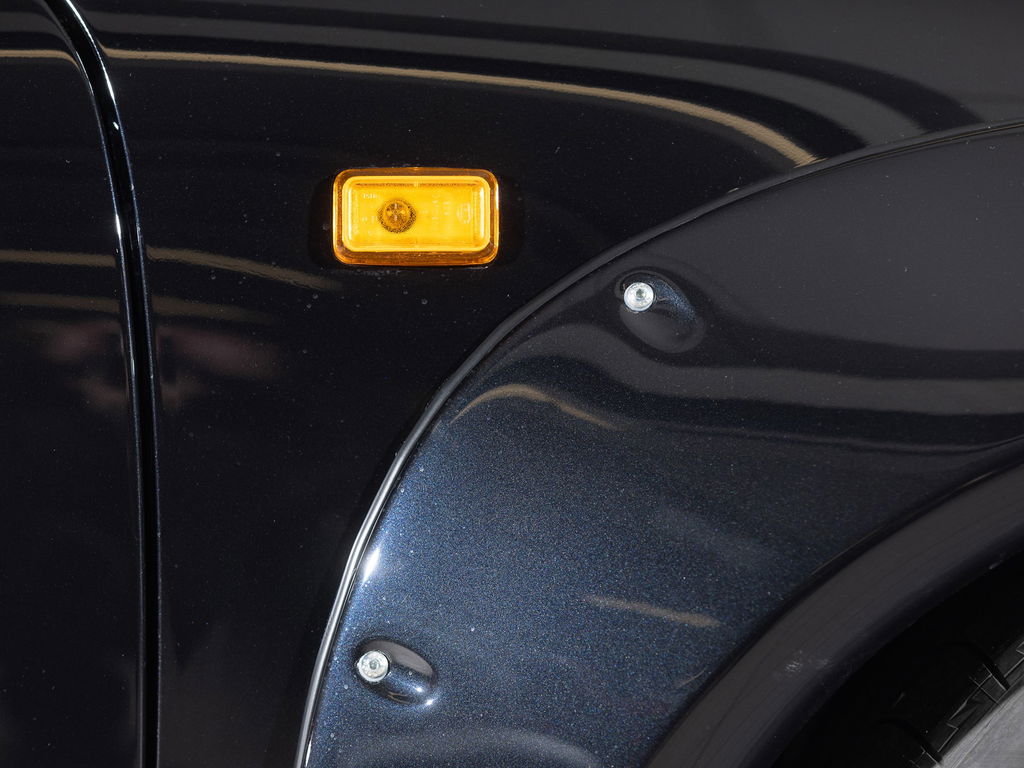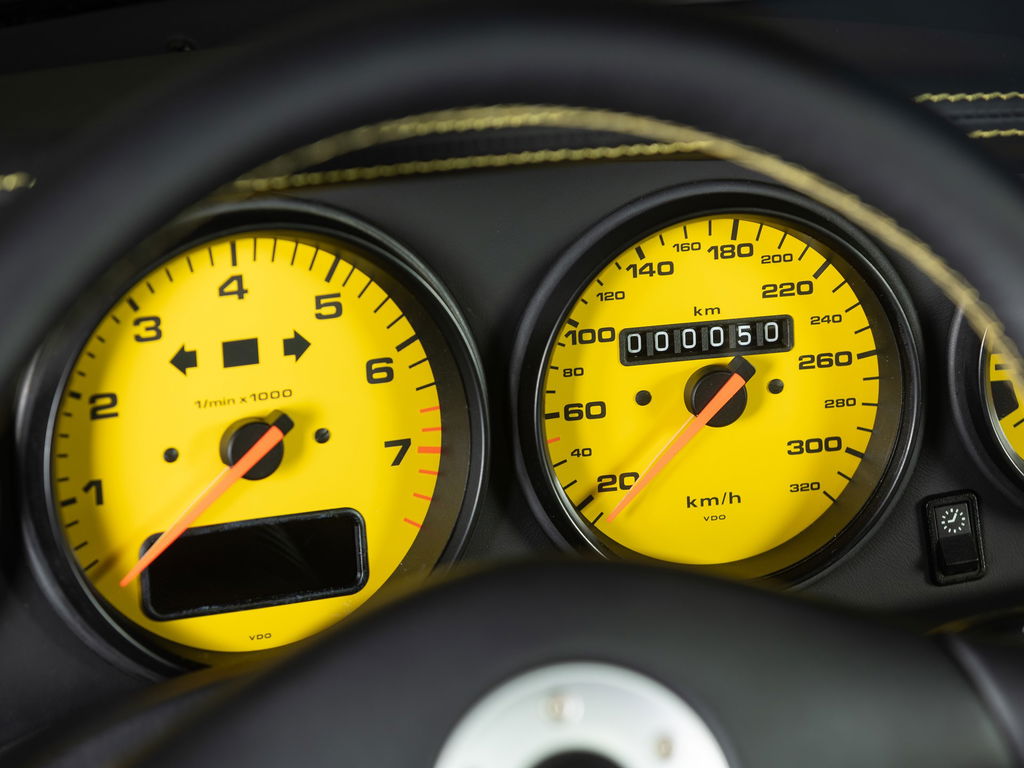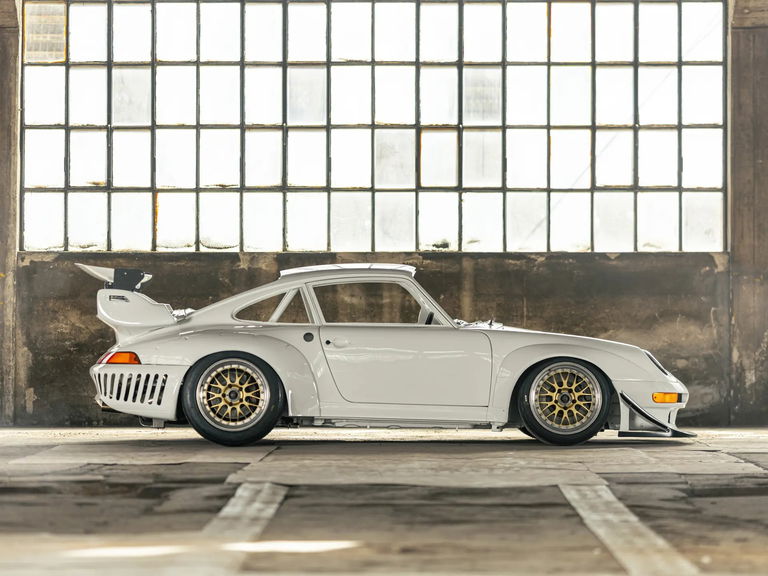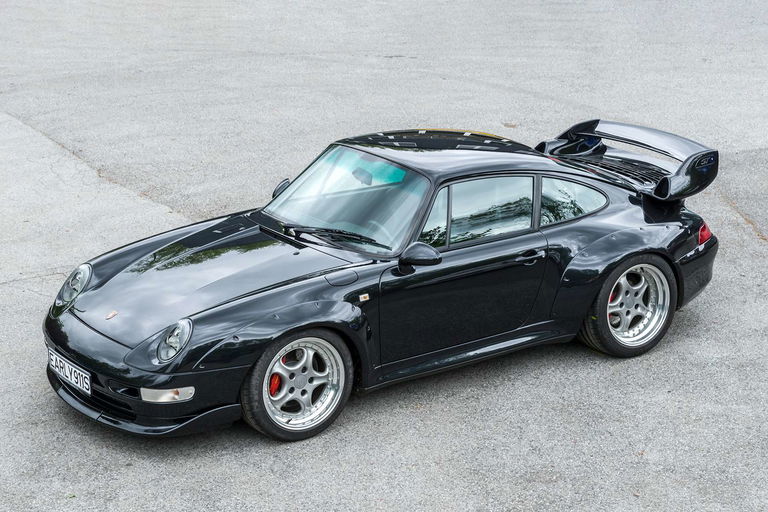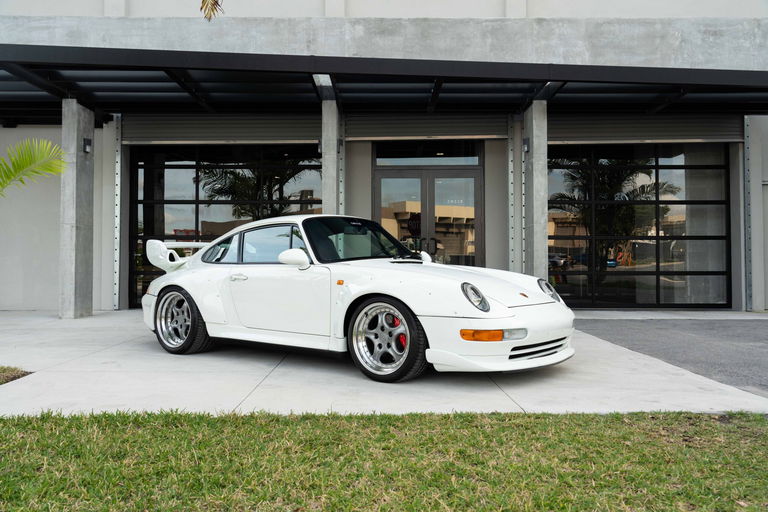The 993-generation Porsche 911 was the swansong for the air-cooled “Mezger” engine that had become synonymous with every 911 since the unveiling of the 901 at the 1963 Frankfurt Motor Show. Although the engine underwent enormous improvements over the 30 years that separated the 901 and the 993, the basic architecture remained the same: a six-cylinder, air-cooled boxer layout with twin overhead cams. It is this tangible link to the very genesis of Porsche as a sportscar manufacturer—as well as the engine’s unique character—that has made the 993-generation 911 one of the most desirable models in the firm’s history. Among the most sought-after variants is the now legendary 911 GT2—the ultimate air-cooled 911.
Like so many exceptional road cars of the 20th century, the GT2 was the by-product of a racing programme that required road car variants to be produced in order to meet homologation criteria. Designed to win Zuffenhausen entry to the FIA GT2 class, Porsche took the 933 911 Turbo and made it lighter to the tune of 200 kilograms, removing just about every creature comfort in addition to the weighty all-wheel-drive components.
Thinner glass was used for the windscreen, while the bonnet and doors were formed from lightweight aluminium. At the same time, engineers managed to tease 430 brake-horsepower from the 3.6-litre flat-six thanks to an increase in peak boost for the twin KKK K24 turbochargers. The result amounted to a 0-100 km/h spinetingling sprint time of around four seconds and a top speed of almost 300 km/h.
The 911 GT2 had looks to match thanks to bolt-on flared wings to accommodate a wider track and enormous yet lightweight Speedline alloy wheels. A significant increase in mechanical grip was allied to an aerodynamics package that included a revised front splitter and huge rear wing. The car would fly the flag for Porsche in competition, scoring two class wins at Le Mans and countless successes in the hands of privateers, while 194 roadgoing examples managed to escape into the wild—among them the example offered.
Completed on 13 May 1996 and delivered new via Porsche Zentrum MAHAG in Munich, Germany, the car was originally finished in Polar Silver. It returned to its supplying dealership in 1998 to have its 430 brake-horsepower engine upgraded to 450 brake-horsepower specification. The car remained in the care of its first owner until at least 2018, by which time it had covered 136,000 kilometres.
The consigning owner acquired the 911 GT2 in 2020, becoming only its second registered owner. Partially dismantled, the car had been the subject of an aborted restoration and was not roadworthy. Porsche specialist Christian ABT Classic was then commissioned to carry out a comprehensive nut-and-bolt rebuild, stripping and chemically dipping the bodyshell, completely rebuilding the 3.6-litre engine, and rebuilding the suspension with Bilstein shock absorbers and Eibach springs. Every facet of the vehicle was gone through, with worn components either being refurbished or replaced, with countless upgrades such as rubber axle mountings being replaced with aluminium. To finish, the exterior was painted in a deeply appealing Black Metallic, with a matching interior retrimmed in leather. A document outlining the works completed is available to view on file.
Restored with an obsessive eye for detail and presenting beautifully in its new black over black colour scheme, this rare 911 GT2 would take centre stage in any serious Porsche collection.


